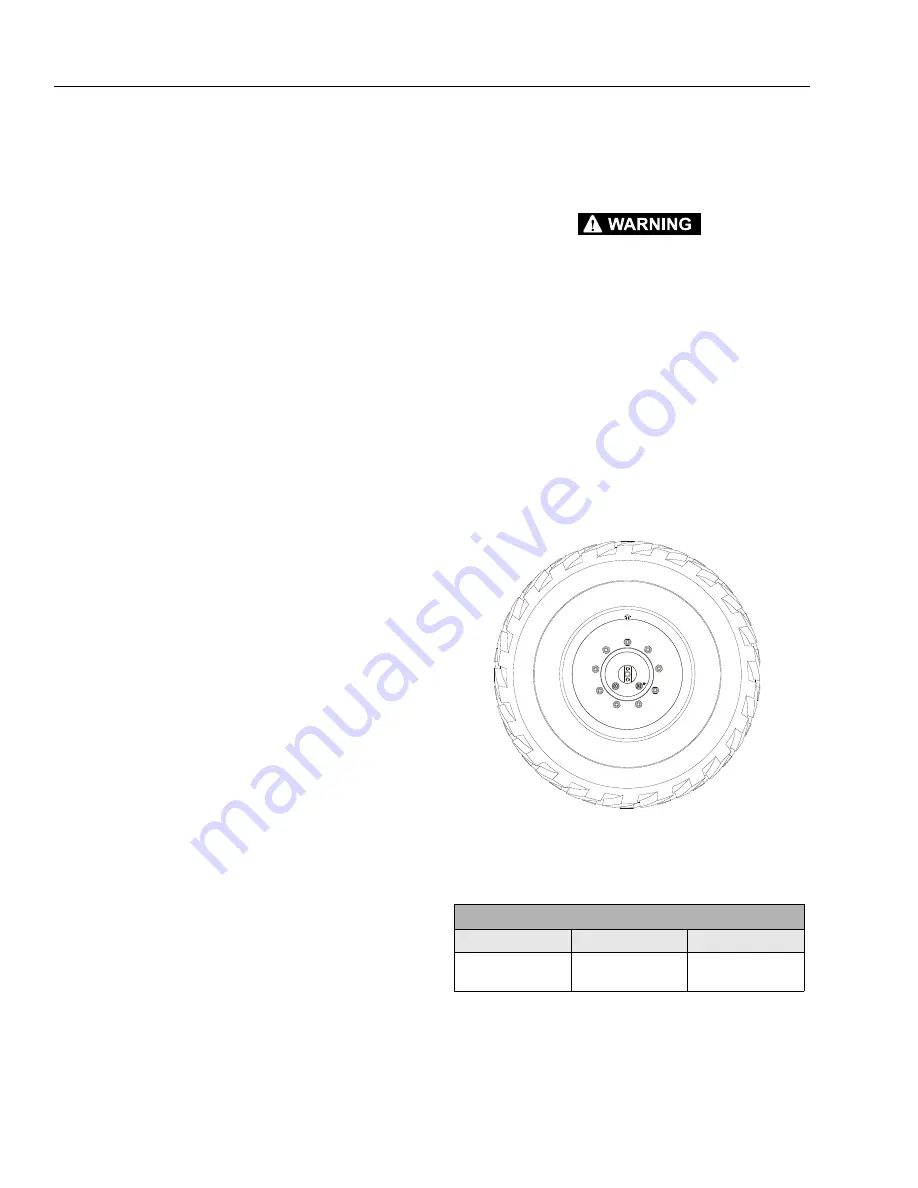
SECTION 3 - CHASSIS, PLATFORM, & SCISSOR ARMS
3-2
31215079
Tire Replacement
JLG recommends a replacement tire be the same size,
ply and brand as originally installed on the machine.
Please refer to the JLG Parts Manual for the part number
of the approved tires for a particular machine model. If
not using a JLG approved replacement tire, we recom-
mend that replacement tires have the following charac-
teristics:
• Equal or greater ply/load rating and size of original.
• Tire tread contact width equal or greater than origi-
nal.
• Wheel diameter, width, and offset dimensions equal
to the original.
• Approved for the application by the tire manufac-
turer (including inflation pressure and maximum tire
load).
Unless specifically approved by JLG Industries Inc., do
not replace a foam filled or ballast filled tire assembly
with a pneumatic tire. When selecting and installing a
replacement tire, ensure that all tires are inflated to the
pressure recommended by JLG. Due to size variations
between tire brands, both tires on the same axle should
be the same.
Wheel Replacement
The rims installed on each product model have been
designed for stability requirements which consist of
track width, tire pressure, and load capacity. Size
changes such as rim width, center piece location, larger
or smaller diameter, etc., without written factory recom-
mendations, may result in an unsafe condition regard-
ing stability.
Wheel Installation
It is extremely important to apply and maintain proper
wheel mounting torque.
WHEEL NUTS MUST BE INSTALLED AND MAINTAINED AT THE PROPER
TORQUE TO PREVENT LOOSE WHEELS, BROKEN STUDS, AND POSSIBLE
DANGEROUS SEPARATION OF WHEEL FROM THE AXLE. BE SURE TO
USE ONLY THE NUTS MATCHED TO THE CONE ANGLE OF THE WHEEL.
Tighten the lug nuts to the proper torque to prevent
wheels from coming loose. Use a torque wrench to
tighten the fasteners. If you do not have a torque
wrench, tighten the fasteners with a lug wrench, then
immediately have a service garage or dealer tighten the
lug nuts to the proper torque. Over-tightening will
result in breaking the studs or permanently deforming
the mounting stud holes in the wheels. The proper pro-
cedure for attaching wheels is as follows:
1. Start all nuts by hand to prevent cross threading. DO
NOT use a lubricant on threads or nuts.
2. Tighten nuts in the following sequence:
3. The tightening of the nuts should be done in stages.
Following the recommended sequence, tighten nuts
per wheel torque chart.
4. Wheel nuts should be torqued after first 50 hours of
operation and after each wheel removal. Check
torque every 3 months or 150 hours of operation.
Table 3-1. Wheel Torque Chart
TORQUE SEQUENCE (DRY)
1st Stage
2nd Stage
3rd Stage
40-50-ft. lb.
(60-70 Nm)
90-105 lb-ft
(125-150 Nm)
170 lb-ft
(230 Nm)
1
2
3
4
5
6
7
9
8
Go
to
Discount-Equipment.com
to
order
your
parts












































